Climate Explained – Question from the Vegan Society Aotearoa New Zealand.
- 19 July 2020
- The Vegan Society
The Vegan Society of New Zealand has issued the Minister for Women, Jan Tinetti, a challenge to go Dairy Free for 7 days to mark International Women’s
Stuff and The Conversation have teamed up with the New Zealand Science Media Centre to create a science panel of experts on climate change, so the public can ask their climate related questions to them. If you have a question you’d like an expert to answer, please send it to climate.change@stuff.co.nz
Thus the Vegan Society decided we would ask the Big Question:
I would like to know how much difference we could make to our commitment under the Paris Agreement and our total greenhouse gas emissions if we removed all cows and sheep from the country and grew plants in their place (hemp, wheat, oats etc). Surely we could easily become carbon neutral if we removed all livestock? How much more oxygen would be produced from plants growing instead? How would this offset our emissions? And what if we returned the land the animals were on to native forests or even pine plantations?
This was their answer given by Sebastian Leuzinger (Professor at Auckland University of Technology)
This is an interesting question and gives me the opportunity for some nice – albeit partly unrealistic – model calculations. Before I start, just two comments regarding the question itself.
Oxygen concentrations have been relatively stable at around 21% of the air we breathe for millions of years. This will not change markedly even if carbon dioxide emissions increase for years to come. Carbon dioxide concentrations, even in the most pessimistic emissions scenarios, will only get to around 0.1% of the atmosphere, hardly affecting the air’s oxygen content.
Secondly, grazing animals like cows and sheep emit methane — and that’s what harms the climate, not the grassland itself. Hemp or wheat plantations would have a similar capacity to take up carbon dioxide as grassland. But growing trees is what makes the difference.
Here’s a back-of-the-envelope calculation to work out how New Zealand’s carbon balance would change if all livestock were removed and all agricultural land converted to forest.
Converting pasture to trees
This would remove all methane emissions from grazing animals (about 40 megatonnes of carbon dioxide equivalent per year). New Zealand has about 10 million hectares of grassland. Let us assume that mature native bush or mature pine forests store the equivalent of roughly 1,000 tonnes of carbon dioxide per hectare.
If it takes 250 years to grow mature native forests on all former agricultural land, this would lock away 10 billion tonnes of carbon dioxide within that time span, offsetting our carbon dioxide emissions (energy, waste and other smaller sources) during the 250 years of regrowth. Because pine forest grows faster, we would overcompensate for our emissions until the forest matures (allow 50 years for this), creating a net carbon sink. Note these calculations are based on extremely crude assumptions, such as linear growth, absence of fire and other disturbances, constant emissions (our population will increase, and so will emissions), ignorance of soil processes, and many more.
If agricultural land was used to grow crops, we would save the 40 megatonnes of carbon dioxide equivalent emitted by livestock in the form of methane, but we would not store a substantial amount of carbon per hectare.
Steps towards a carbon-neutral New Zealand
How should we interpret this rough estimate? First, we must acknowledge even with our best intentions, we still need to eat, and converting all agricultural land to forest would leave us importing food from overseas — certainly not great for the global carbon budget.
Second, it shows if livestock numbers were at least reduced, and we all turned to a more plant-based diet, we could reduce our emissions substantially. The effect would be similar to reforesting large parts of the country. Third, this example also shows that eventually, be it after 250 years in the case of growing native forests, or after about 50 years in the case of pine forests, our net carbon emissions would be positive again. As the forests mature, carbon stores are gradually replenished and our emissions would no longer be compensated. Mature forests eventually become carbon neutral.
Even though the above calculations are coarse, this shows that a realistic (and quick) way to a carbon-neutral New Zealand will likely involve three steps: reduction of emissions (both in the agricultural and energy sectors), reforestation (both native bush and fast growing exotics), and a move to a more plant-based diet.
Credits: This article appeared here on The Conversation and here on Stuff
Day. Celebrated world over, this day highlights the struggles of everyday women within the patriarchal society. Although fair pay is enshrined in law, women are still underpaid compared to their male counterparts. The female body is still a vehicle for exploitation and none more so than the dairy cow.
Although dairy is a staple of the New Zealand diet, it is becoming more expensive at a time when the cost of plant milks are decreasing. Milk relies on the exploitation of female mammals, particularly cows, but increasingly goats, sheep, horses and even camels are also being targetted as milk producers for human consumption. Cows see their children taken away from them shortly after birth, their distress is audible. They are then subjected to twice daily milking, all so a few companies can make a lot of money.
“On this International Women’s Day we are encouraging women everywhere to consider the role of female animals in farming. We’re asking Jan Tinetti to go dairy free for 7 days to show solidarity with female beings. As the Minister for Women she is there to ensure women get a fair deal in society, so we’re asking her to think about other females in this country, particularly the dairy cow, who gets a very raw deal in life.” media spokesperson Claire Insley explained.
Dairy may taste good, but it is not healthy for humans. It is the natural food for baby cows, to help them grow big and strong, however it often makes humans grow fat and the excess hormones consumed may be what triggers breast cancer. It has been shown that women who drink more dairy have a higher chance of getting breast cancer than those who drink less or none. There is nothing in dairy milk that humans cannot get from plant sources.
There are many plant forms of calcium, including green leafy veg, such as spinach, broccoli, kale etc, sesame seeds, soy foods, especially fermented soy, other legumes, nuts, especially almonds and even some grains, such as amaranth contain good amounts of calcium. People certainly do not need to rely on dairy products for calcium. The only thing to miss out on is saturated fat. Many low fat dairy products have had the fat replaced with sugar, so they are not really healthier alternatives than the high fat ones.
The Dairy Free Challenge can be found here: www.tryvegan.org.nz
Enjoyed reading this? We think you'll enjoy these articles:
What’s in a Trademark?
What’s in a Trademark? 29 March 2024 The Vegan Society As more companies start to become more aware of the ingredients in …
NZ Vegan Chocolate Awards 2024
2024 NZ Vegan Chocolate Awards 25th March 2024 The Vegan Society One of the most wonderful foods our planet has to offer …
Plum and Lime Cake
Liked this? We think you’ll enjoy these recipes: Katsu Tofu Katsu Tofu The Vegan BBQ The Vegan BBQ 1 2 3 … …




